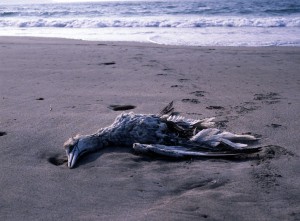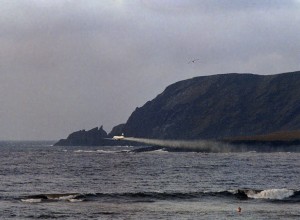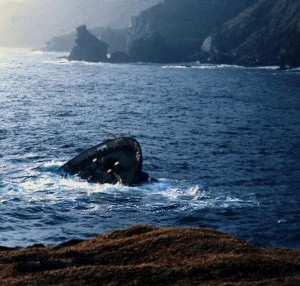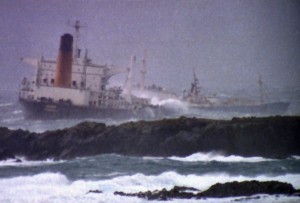A liberian registered American owned tanker, sailing from Norway to Quebec with a cargo of 84,700 tonnes of crude oil ran aground on the southern tip of shetland island around 11:20 a.m. following engine failure, causing a major oil spill. The oil spread to the south-west coast ; efforts to prevent damage (booms, skimmers, aerial dispersal spraying ) were hindered by winds of force 10-14 (hurricane forces).
A joint response centre was set up , the environmental impact of the spill was looked at. A ban was issued on the Shetland fishing industry : 2.5 years for shellfish, 6 to 12 months for fishes. Salmon farms were badly affected and most of their stock had to be slaughtered. 1,538 birds from 23 different species were found dead on beaches.
Strong winds also blew oil over the land, exposing local populations, fauna and flora to hydrocarbons. Healths effects (eye, skin, throat irritations, headaches and fatigue) were reported ; an study on long-terms effects showed no risks. The land was fit for agricultural use by the next growing season. The persons directly involved in clean-up operations were supplied with personal protective equipments and filter masks. By 1995, 45 millions pounds had been paid in compensation.
On the morning of the 4th January, 4 spare steel pipe sections, which had been secured on the port side of the after deck, broke loose in the severe weather conditions and were rolling between the port side of the engine casing and the ship’s rails, damaging steel pipes of the diesel oil storage tanks. The engine oil supply was thus contaminated by seawater, causing the main engine to stop, despite continuous attempts from the crew to drain the water from the oil. The vessel drifted and could not be rescued ; all onboard personnel were evacuated by helicopter.
The 241-m long vessel had been built in Japan in 1975 and did not have a double hull which would have lessen the chances of an oil spillage. The report into the disaster said that the bad weather was largely to blame for the accident, but also underlined some faulty actions by the ship’s captain (late detection of the broken pipes because bridge duty were spent inside the wheelhouse, no appreciation of the danger that the loose pipes would pose to the integrity of the other pipes, failure to realise the origin of seawater contamination ). Recommendations were made into the training of seamen, the immediate information of coastguards on receipt of a request for towage assistance from vessels carrying dangerous cargo, the need of harmonisation of towing systems for cargos.







